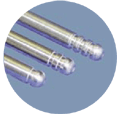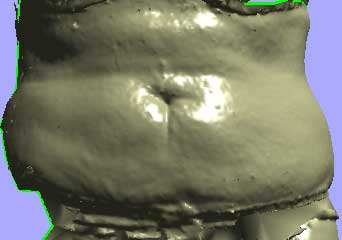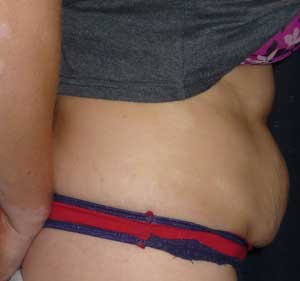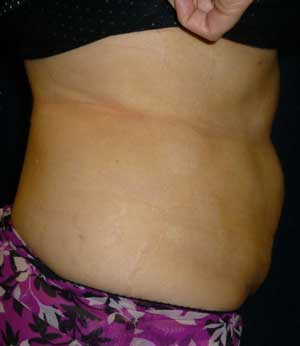Product summary
Launched in the UK in September 2005, the VASER® (Vibration Amplification of Sound Energy at Resonance) Lipo machine is manufacturer by Sound Surgical Technologies from Colorado, USA and is targeted at fat reduction by Liposelection®.
Liposelection® is the marketing term being used for liposuction procedures performed using this VASER® specific device, which uses ultrasound energy (sound waves which vibrate as they travel) to break up the fat cells before they are then extracted using suction.
How does it work?
Liposuction (also called lipoplasty, liposculpture or lipectomy) is a surgical technique (performed under anaesthesia – general or local plus sedation) for removing specific areas of stubborn fat that do not respond to a healthy diet and regular exercise, such as areas around the back, chest, stomach, hips, buttocks, thighs, knees, upper arms, underneath the chin and the neck. It is not effective for cellulite reduction or an alternative to sensible dieting and cannot prevent you gaining weight.
Traditional liposuction techniques involve the removal of unwanted fat via a hollow cannula (tube) with the assistance of vacuum suction and the forceful use of the surgeon’s arm. Techniques available include SAL (Suction Assisted Liposuction) and PAL (Power Assisted Liposuction). Following these traditional techniques, UAL (Ultrasound Assisted Lipoplasty), became available in the early 1990s which uses ultrasound energy, emitted via the tip of a cannula, to emulsify (liquefy) the fat first before it is extracted via the vacuum suction.
VASER® Lipo, launched in the USA in 2002, also uses ultrasound to break up the fat cells before they are then extracted using the suction. However, the VASER system differs from previous generations of UAL in its application of the ultrasound.
During the procedure (in common with traditional liposuction techniques), a saline solution containing a drug to shrink blood vessels to reduce bleeding (adrenaline), and an anaesthetic to numb the area (lignocaine/lidocaine) are introduced through a small incision in the treatment area. This solution is used to “wet” the treatment area and loosen up the fatty tissue ready for the ultrasound delivery. It also makes it easier to remove all the emulsified fat in a single solution once treatment is complete.
 The VASER® Lipo device uses a probe (2.2 - 3.7mm in diameter) with special patented grooves along its sides (see image), which means that the ultrasound energy can be emitted from all sides of the probe, as well as from the tip, allowing the surgeon the ability to sculpt delicate areas such as the arms, inner thighs, neck and chin more precisely.
The VASER® Lipo device uses a probe (2.2 - 3.7mm in diameter) with special patented grooves along its sides (see image), which means that the ultrasound energy can be emitted from all sides of the probe, as well as from the tip, allowing the surgeon the ability to sculpt delicate areas such as the arms, inner thighs, neck and chin more precisely.
The effect of delivering the ultrasound in this dispersed way (as opposed to all from the tip with traditional UAL techniques) is that it doesn’t damage any other structures within the area, such as blood vessels or nerves, which is an advantage it has over more traditional methods of liposuction.
Once liquefied, the fat is then removed using a patented rounded cannula, with massage and suction, meaning that surrounding tissue is largely undisturbed and bruising is said to be minimal.
License status
VASER® Lipo was cleared by the US FDA (Food & Drug Administration) in September 2002 for use in fat removal, and has received a European CE Mark.
Should be used by
Fully trained and qualified surgeons only.
What is it used to treat?
It is not a cure for obesity or a treatment for cellulite. Suitable candidates for VASER® Lipo are average weight people with firm, elastic skin who have pockets of fat in specific areas.
Areas that can benefit from liposuction in general can be treated with VASER® Lipo and include stubborn fat around the back, chest, stomach, hips, buttocks, thighs, knees, upper arms, underneath the chin and the neck.
Due to the technique used with VASER® Lipo it is considered ideal for the sculpting of delicate areas of the body which may be harder to access with traditional techniques, e.g., arms, inner thighs, neck and chin.
Side effects & risks
As the mechanical effort is less than with traditional liposuction, bruising and pain is minimised, meaning a faster recovery time. You should still expect bruising, swelling and soreness for a few days, but recovery is much quicker than with conventional liposuction – i.e. days not weeks. General over-the-counter pain killers will be prescribed by your surgeon for any discomfort.
Initially you should expect some fluid drainage from the incision points. You will also be given a compression garment to wear over the treated area for approximately 2 – 6 weeks depending on the area(s) treated and the amount of fat removed.
Possible side effects include unevenness, persistent swelling, or lumpiness in the area treated, and skin discolouration or scarring at the incision points.
Other risks associated with surgery include reactions to anaesthetic, haematomas (collections of blood under the skin), infection and nerve damage.
Before and After Photographs of VASER Liposuction
 |
 |
 |
 |
Images Courtesy of MediZen. Photos on left depict patient before VASER Lipo and Photos on the right show patient after VASER Lipo. To see more real life before and after VASER Lipo images visit MediZen.
All before and after photographs are real patients, your results may differ.
Not to be used in
Those people prone to keloid, (red, angry, raised) scars, or who have a history of problems with wound healing.
Cost of treatment
Private costs for VASER® Lipo treatment are very similar to those of traditional liposuction and depend on the size of the area(s) being treated, and can range from £1,800 - £6,000.
Clinical papers
Liposuction and VASER.
de Souza Pinto EB, Abdala PC, Maciel CM, dos Santos Fde P, de Souza RP.
Department of Plastic Surgery, Santa Cecilia University, Brazil
Clin Plast Surg. 2006 Jan;33(1):107-15
Clinical Application of VASER-assisted Lipoplasty: A Pilot Clinical Study
Mark Laurence Jewell, Peter Bela Fodor, Ewaldo Bolivar de Souza Pinto and Mussab Abdulrahman Al Shammari
(2002, March); Aesthetic Surgery Journal 22 (2), P.131-146
For more information please visit the manufacturer’s website – www.vaser.com
Do you have a question? Ask one of our experts NOW